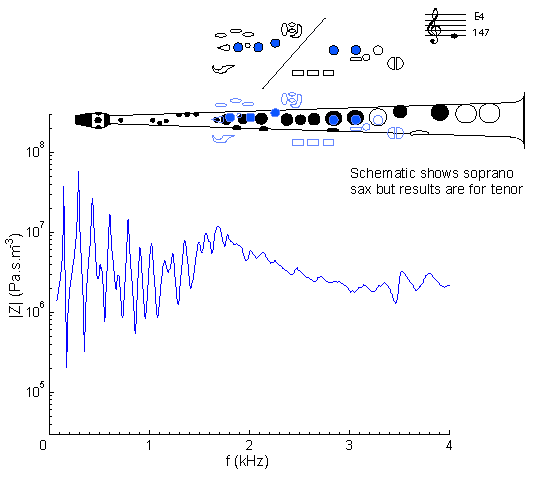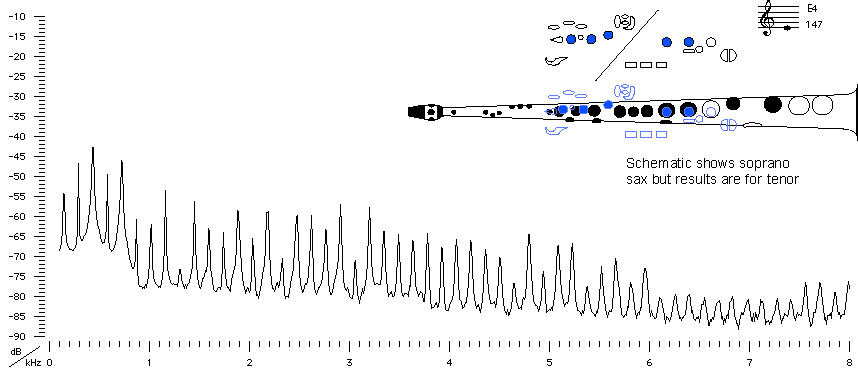| Acoustics of the saxophone |
Bb tenor saxophone |
E4 |
 |
Fingering Acoustic schematic Non-specialist introduction
to acoustic impedance Notes are the written pitch. |
At frequencies below about 1 kHz, this curve looks rather like that for D4 and D#4, but raised in frequency. At higher frequencies, however, the situation is complicated by the cut-off frequency. Here, the 1 kHz cutoff is also weakening the third peak. The first peak can be reduced in magnitude and shifted in frequency using a register hole (operated by the octave key). See E5.
This note is, acoustically at least, a cross fingering: there is a key closed below the first open key, as the schematic inset shows. Because of the large size of the tone holes, cross fingerings have little effect at low frequency.
For general comments about the first register, see A#3. Compare with the impedance spectrum for a soprano sax on written E4: same fingering but sounding one octave higher.

Sound spectrum
of a Bb tenor saxophone
played using fingering for E4.
For more explanation, see
Introduction to saxophone acoustics.
|
Contact:
Joe Wolfe
/ J.Wolfe@unsw.edu.au |